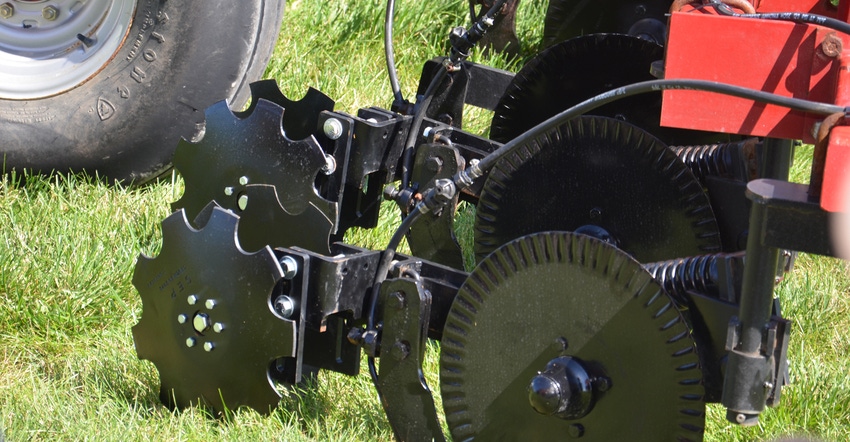
This may not be the year you’re looking to spend money on equipment — even add-on, short-line equipment, which usually doesn’t carry a huge price tag. However, results from one four-year study indicate that if you can boost income through increased yield, it might not be difficult to pay back that investment.
In its Practical Farm Research program over the past four years, Beck’s has included a study comparing using nitrogen sealers to applying nitrogen sidedress without sealers to close the trench. Ryan McAllister, director of Beck’s PFR, says once a practice pays on average with a positive return on investment over a minimum of three years, it’s designated as a PFR Proven practice.
Results
This is the first year for PFR Proven designations. It didn’t take long for the concept of closing the trench after a nitrogen application to earn the PFR stamp of approval. The N sealer study was one of the practices highlighted during PFR tours at Beck’s PFR site near Atlanta, Ind., last year.
The system Beck’s uses to seal the nitrogen application trench consists of a pair of coulters that attach to the sidedress applicator bar. A set of coulters runs behind each knife.
The average yield advantage after comparing sealers vs. no sealers over four years was 4.7 bushels per acre, according to the PFR study. The results include tests at multiple PFR locations that Beck’s maintains in various Midwest states.
The add-on sealers Beck’s uses are sold by Nitrogen Sealing Systems. The sealers were invented by John Miller, an Illinois farmer. His goal was to lose less liquid nitrogen by closing the slot. Sealers are also available for anhydrous applicators. To learn more, visit nitrogensealingsystems.com.
Quick payback
McAllister and his staff developed a way to show how quickly an investment in sealers for a nitrogen application toolbar could pay for itself. The concept consists of calculating the number of acres it would take to pay off an investment in the N sealers, assuming the average yield advantage observed in the four-year study is accurate.
Two variables have to be accounted for — the price of corn and the size of the toolbar. Both affect payback. Obviously, it’s quicker to pay off an investment when corn prices are higher. And the investment is bigger if you’re buying add-on equipment for each row when the machine covers more rows at once.
Here are results of McAllister's calculations. At $3 corn, you could pay for an investment in nitrogen sealers on an 11-, 13-, 15- and 17-row bar in 195, 230, 266 and 301 acres, respectively. At $4 corn, you could pay for the cost of the sealers on 11-, 13-, 15- and 17-row bars after running 146, 173, 199 and 226 acres. The number of acres to payoff would also vary if the price of sealers changes.
About the Author(s)
You May Also Like




